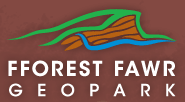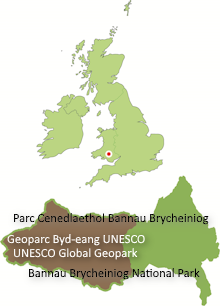A landscape characterised by natural cliffs, quarry faces, rock outcrops, limestone pavements and calcareous grassland.
Carboniferous Limestone
The cliffs support many rare plant species including three species of whitebeam which are found only in the Brecon Beacons. They also provide nesting sites for the peregrine falcon.
The limestone pavements and calcareous grassland support a flora including quaking grass, hairy greenweed, soft leaved sedge, mossy saxifrage and lichens.
Some of the largest cave systems in Britain are to be found within the Geopark. These provided shelter for bears, wild ox and deer in the past but are currently only used by lesser horseshoe bats (and badgers?)
Tufa springs
Springlines occur on slopes where Devonian and Namurian sandstones and Carboniferous Limestones overlie impermeable mudstones. In areas of limestone quarrying where these springs flow through and dissolve calcium carbonate from waste tips created by lime burning, stream beds and pools of standing water are coated with layers of tufa and films of cyanobacteria. Rare examples of the freshwater stromatolite Rivularia occur on pebbles and boulders in uncontaminated natural limestone springs.



